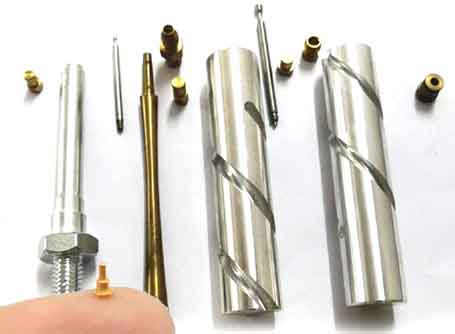Mikro-CNC-bearbetningstekniken använder en helautomatisk metod för att superfinisha ytan på metalldelar. Genom en slags mekanokemisk verkan, materialet på 1-40μm på ytan av metalldelarna tas bort, och ytkvaliteten på den behandlade ytan når eller är bättre än N1-nivån i ISO-standarden. Mikro CNC-bearbetningsteknik används huvudsakligen inom de två områdena ultraprecisionspolering och ultraprecisionsljusning. Ultra-precision polishing automates the traditional manual polishing process; The super-precision brightening generates a new surface topology.
An outstanding advantage of micro-CNC machining technology is that it can give new microstructures to the surface of the part. These microstructures can improve the adaptability of the part surface to specific application functions. Such as reducing friction and mechanical differences, improving wear resistance, and improving the deposition performance of the surface before and after coating.
I allmänhet, super-precision brightening can remove secondary micro-rough surfaces. The thickness of the secondary rough surface is between 0 och 20 μm, located between the peaks of the primary micro rough surface of the part surface. The super-finishing polishing removes the primary microscopic rough surface partially or entirely, and its value is between 10 och 40 μm. Of course this depends on the initial state of the part material surface.
The materials that can be processed by microfabrication technology so far are: Annealed and hardened steel, Copper and copper alloys, cast iron, Inconel nickel alloy (nickel-based alloy), titan, Pretreatment (PVD, CVD, galvanisering) before and after surface hard coating treatment.

Teknik för mikro-CNC-bearbetning av delar
 English
English العربية
العربية 中文(漢字)
中文(漢字) Čeština
Čeština Dansk
Dansk Nederlands
Nederlands Suomi
Suomi Français
Français Deutsch
Deutsch Italiano
Italiano 日本語
日本語 ಕನ್ನಡ
ಕನ್ನಡ 한국어
한국어 Português
Português Русский
Русский Slovenčina
Slovenčina Español
Español Svenska
Svenska Türkçe
Türkçe

